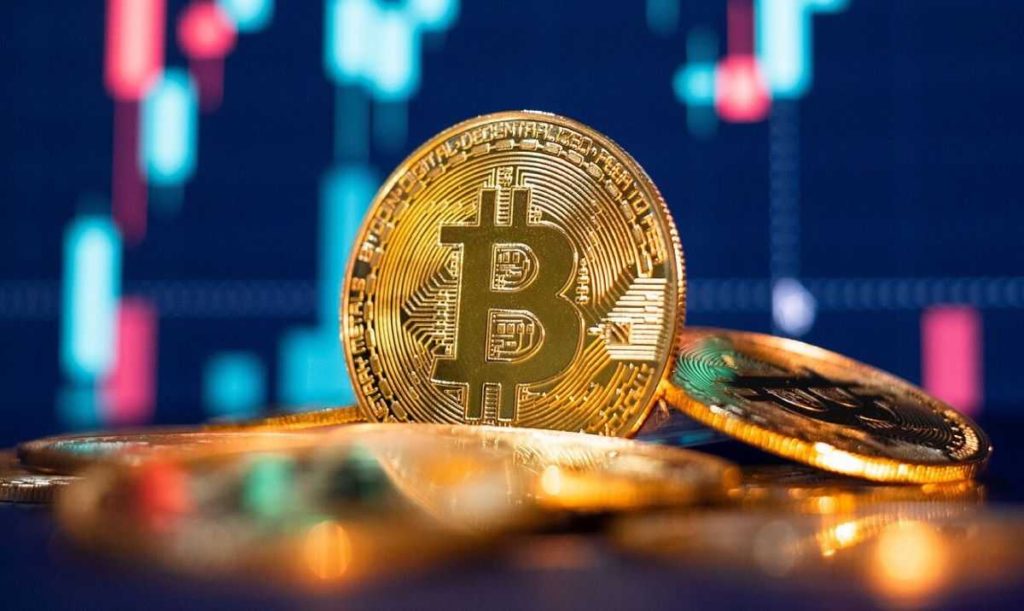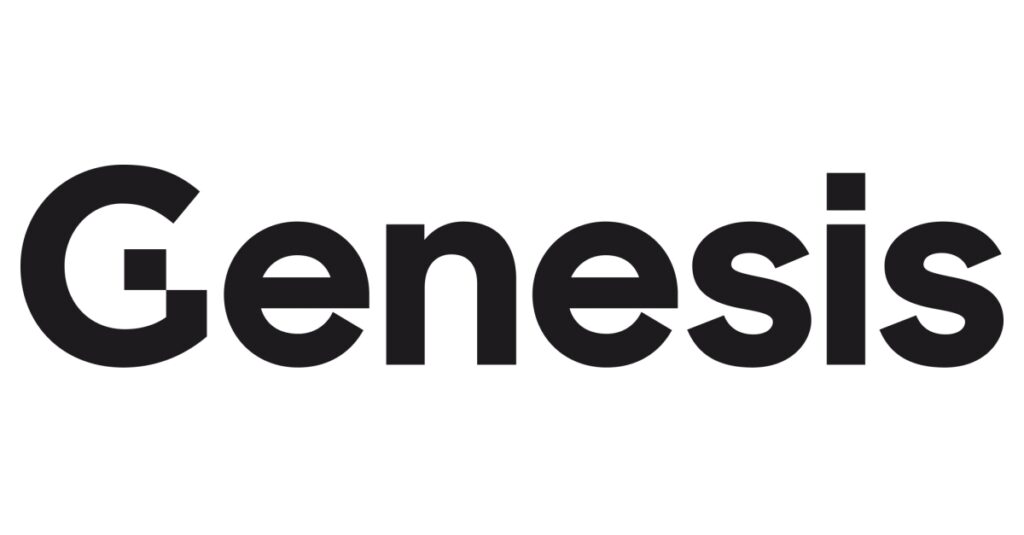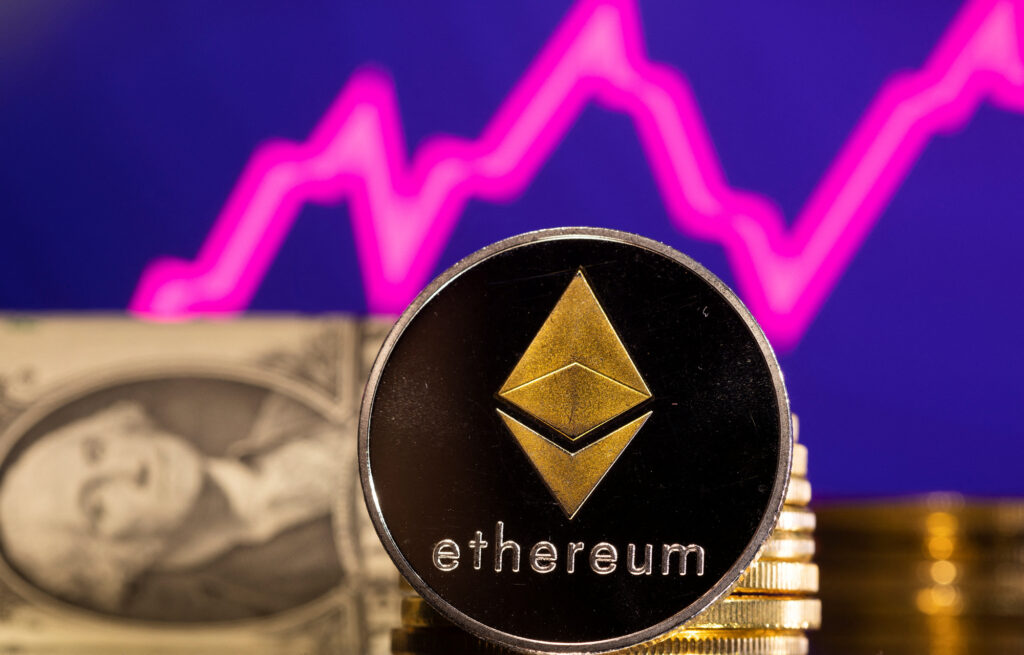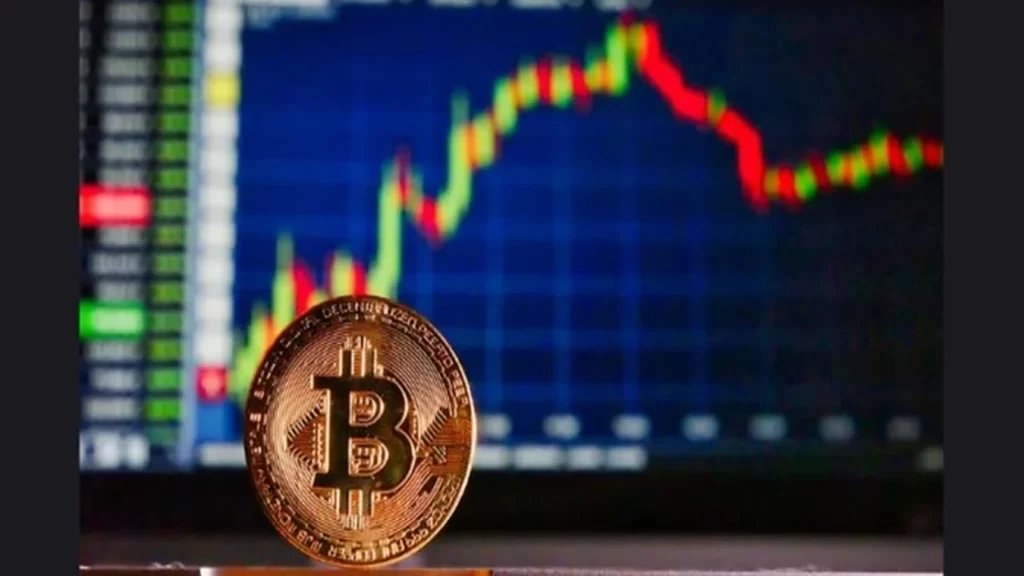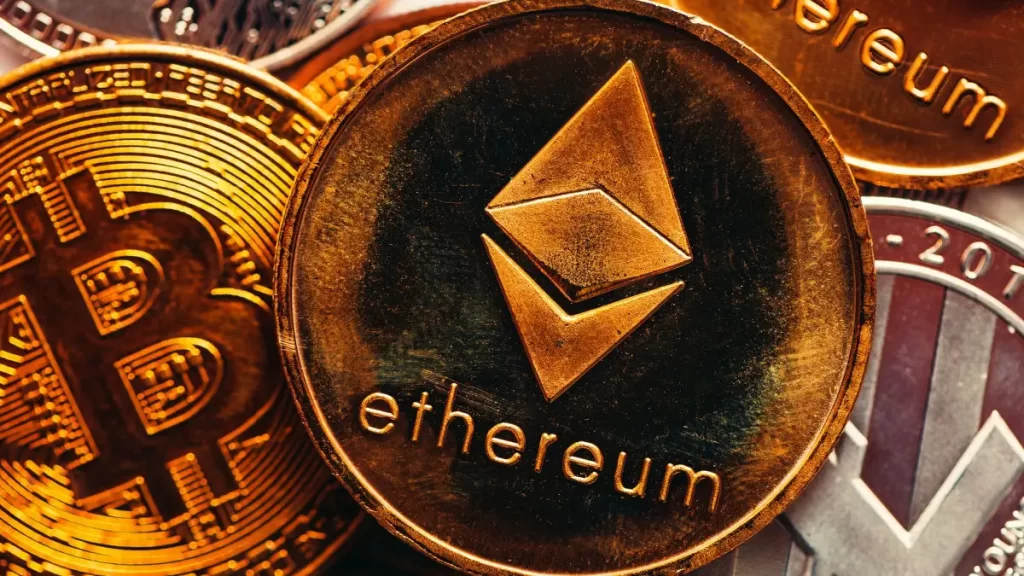Cryptocurrency exchange OKX has declared its expansion into Argentina as part of its ongoing strategy to target the Latin American market, following its debut in Brazil in late 2023.
In a recent statement, OKX announced that Argentine users would have access to OKX’s crypto exchange platform, a self-custody wallet, and the ability to trade nonfungible tokens (NFTs).
Argentina occupies the 15th position on the Chainalysis 2023 Global Crypto Adoption Index, which evaluates on-chain and real-world data to gauge nations leading in crypto adoption. Meanwhile, Brazil holds the ninth rank.
“We’re thrilled to announce the official launch of our exchange and Web3 Wallet in Argentina! This global expansion is a vital step in unlocking the potential of crypto across Latin America,” OKX tweeted.
The announcement follows about nine months after competitor crypto exchange Binance introduced exchange services in Argentina.
Maximiliano Hinz, director of Binance for the Latam southern cone, explained to Reuters in April 2023 that the expansion decision stemmed from the growing demand for crypto services in Argentina.
“This launch has to do with the public demand that exists here,” Hinz stated.
OKX president Hong Fang highlighted Argentina’s significant growth in crypto adoption:
“We are delighted to officially launch the latest expansion of our world-class exchange and Web3 wallet in one of the most vibrant cryptocurrency markets in Latin America.”
Fang added that Argentina is a priority as part of its expansion plans across Latin America.
“The promise of crypto and blockchain is expanding across Latin America, and Argentina represents a crucial launchpad for our regional growth strategy,” Fang stated.
This follows the recent announcement of the “Bases for the Reconstruction of the Argentine Economy” decree passed in December 2023, permitting Argentine citizens to use Bitcoin and other cryptocurrencies to settle contracts within the country.
READ MORE: Bitcoin’s L2 Ecosystem is Booming as Halving Approaches
Diana Mondino, the Argentine minister of foreign affairs, international trade and worship, confirmed the news that “Argentina contracts can be settled in Bitcoin, and also any other crypto.”
However, in October 2023, Cointelegraph reported that Latin America prefers centralized exchanges over decentralized exchanges compared with the rest of the world.
“Latin America shows the highest preference for centralized exchanges of any region we study, and tilts slightly away from institutional activity compared to other regions.“
Nonetheless, in May 2023, Argentina’s central bank banned payment providers from offering crypto transactions to reduce the country’s payment-system exposure to digital assets, subjecting fintech companies to the same regulations as conventional financial institutions in Argentina.
The freshly introduced spot Bitcoin exchange-traded funds (ETFs) have wrapped up their inaugural 20 trading sessions, attaining the £10 billion milestone in assets under management (AUM).
As per figures from BitMEX Research, net flows for the nine ETFs hit £2.7 billion on Jan. 9, led by BlackRock’s iShares Bitcoin Trust, presently holding Bitcoin (BTC) valued at £4 billion.
The runner-up is Fidelity’s Wise Origin Bitcoin Fund, managing over £3.4 billion in BTC.
The ARK 21Shares Bitcoin ETF has also crossed the billion-pound milestone, housing approximately £1 billion worth in its portfolio.
In contrast, Grayscale Bitcoin Trust (GBTC) has seen outflows of £6.3 billion over the past 30 days, with £51.8 million in outflows recorded on Feb. 9, marking its lowest daily volume of capital withdrawals since conversion.
“I thought the Nine would get a bit weaker as GBTC outflows subsided but they’re getting stronger,” remarked Bloomberg analyst Eric Balchunas on X.
Invesco experienced an outflow, becoming the first non-GBTC product to do so.
READ MORE: Bitcoin’s L2 Ecosystem is Booming as Halving Approaches
Over the forthcoming months, Bitcoin ETF flows are anticipated to surge as trading firms conclude their due diligence on the investment vehicles.
Bitcoin’s price stabilised above technical support in January, “including its 200-day moving average (£29,902) and on-chain mean (£33,487),” according to a recent analysis from ARK Invest.
Throughout the month, the cryptocurrency price increased by 0.6% to £42,585.
ARK Invest’s bullish perspective suggests that Bitcoin is supplanting gold as a risk-off asset. “Bitcoin’s price relative to that of gold has increased twenty-fold in the last 7 years.
In January 2024, Bitcoin could buy ~20 troy oz of gold, compared to 1 troy oz in April 2017,” notes the analysis. “We believe this trend should continue as Bitcoin increases its role in financial markets.”
Given the macroeconomic context, the asset manager foresees that “as inflation cools and real rates rise, Bitcoin should remain antifragile as banks continue to lose deposits.”
The United States Securities and Exchange Commission (SEC) authorised Bitcoin ETF applications from ARK 21Shares, Invesco Galaxy, VanEck, WisdomTree, Fidelity, Valkyrie, BlackRock and Grayscale on Jan. 10, over a decade after Cameron and Tyler Winklevoss applied to launch the Winklevoss Bitcoin Trust in 2013.
On 8th February, the New York State Office of the Attorney General (NYAG) resolved its case involving the Gemini Earn programme by reaching an agreement with Genesis Global Holdco.
Yet, the following day, the NYAG submitted an expanded complaint in the same case, identifying Genesis Global Holdco and all its codefendants.
The Genesis holding company petitioned the New York Southern District Bankruptcy Court on 8th February to ratify a settlement pact between itself and the NYAG. According to the filing, the settlement was the result of extensive negotiations.
Under the Genesis settlement, the NYAG would be reimbursed for its claims on equal terms with the United States Securities and Exchange Commission (SEC), but only after creditors were paid.
Genesis previously reached a $21 million settlement with the SEC on 31st January. Both settlements will be deliberated on 14th February.
In October, New York Attorney General Letitia James initiated a lawsuit against Genesis Holdco, Genesis Global Capital, Genesis Asia Pacific, their parent company Digital Currency Group (DCG), cryptocurrency exchange Gemini, former Genesis CEO Michael (Soichiro) Moro, and DCG CEO Barry Silbert for fraud linked to the Gemini Earn programme.
The NYAG alleged that the parties had defrauded over 230,000 investors, including 29,000 New Yorkers, of more than $1 billion.
On 9th February, James revealed that the NYAG was broadening its allegations against DCG, Silbert, and Moro, having identified additional investors who suffered losses:
“In total, OAG [Office of the Attorney General] found that these companies defrauded more than 230,000 investors out of more than $3 billion.”
Despite the settlement reached the previous day, Genesis Holdco (as one of the “Genesis/DCG Defendants”) was implicated in five of the ten causes of action in the new complaint. According to the revised complaint:
“Gemini solicited money from the public with false assurances that Earn was a highly liquid investment and that Genesis Capital was creditworthy based on Gemini’s ongoing risk monitoring. In reality, however, Gemini’s confidential risk reports found that Genesis Capital posed a high risk of default.”
Allegations that the Genesis loan book was overcollateralised were unfounded, and a significant portion of Gemini customers’ funds were invested in FTX-affiliated Alameda Research, according to the complaint. Genesis also incurred losses due to the collapse of Three Arrows Capital, the complaint continued.
It seeks a permanent injunction against the defendants from conducting related businesses in New York state and the disgorgement of illegally obtained funds along with the reimbursement of investors.
Gemini and Genesis collaborated on the Gemini Earn programme, introduced in 2021. Genesis halted withdrawals in November 2022 and declared bankruptcy in January 2023, triggering a series of legal actions.
The SEC filed a complaint against Gemini and Genesis in January 2023. Gemini sued Genesis in July and again in October.
In January, Genesis settled with the New York Department of Financial Services over Anti-Money Laundering shortcomings and inadequate cybersecurity. As part of the agreement, it forfeited its New York BitLicense.
READ MORE: Dencun Upgrade Clears Final Testing Hurdle, Sets Stage for Ethereum Mainnet Deployment
Cryptocurrency exchange Coinbase, based in the United States, anticipated that crypto-oriented voters in California would have a significant impact on the 2024 elections based on their ownership and views on digital asset-related policies.
In a blog post on 9th February, Coinbase referenced data from business intelligence firm Morning Consult, indicating that 27% of Californians — approximately 8.2 million individuals — owned cryptocurrency.
The majority of crypto owners in the state — 78% — believed that policymakers should favour “new, innovative, and disruptive technologies,” and many indicated they would vote accordingly.
“California crypto owners overwhelmingly report that they would be much more likely to support candidates that hold pro-crypto and blockchain positions,” said Coinbase.
“Almost 4 in 5 CA crypto owners say they would be more likely to support a candidate who supports the U.S. crypto industry as a job creator and source of U.S. geopolitical strength.”
According to Coinbase, a slightly larger majority — 51% — of U.S. voters nationally among Generation Z and millennials expressed willingness to support candidates favourable to crypto in the 2024 elections.
U.S. President Joe Biden and former President Donald Trump, the likely candidates for both major political parties for president, have already appeared on primary ballots in South Carolina and New Hampshire.
Coinbase’s findings mirrored a survey released in January by the Crypto Council for Innovation, which suggested that most U.S. voters prefer lawmakers who seek “to write clear rules for cryptocurrency,” indicating that crypto users could be a “key swing voting bloc” in 2024.
“Congress and other policymakers should take note that crypto voters are engaged in their states and they want rules, not an unpredictable regulation-by-enforcement approach.”
Digital assets have become a campaign issue for Republican Party presidential candidates in the United States.
Before withdrawing from the race, Florida Governor Ron DeSantis opposed central bank digital currencies in the country. Trump has since adopted the issue, pledging to never allow a digital dollar if re-elected.
Authors such as Michael Chabon, Ta-Nehisi Coates, and Sarah Silverman, who are taking legal action against artificial intelligence (AI) firm OpenAI for copyright infringement, have urged a California court to dismiss similar lawsuits filed by The New York Times (NYT), John Grisham, and others in New York.
In a court filing on Thursday, 8th February, the authors contended that allowing these duplicate lawsuits—such as the NYT’s case and a prior one initiated by the Authors Guild on behalf of Grisham and others—in different jurisdictions would result in “inconsistent rulings in overlapping class actions” and constitute a misapplication of court resources.
Comedian and author Sarah Silverman, alongside two other writers, Richard Kadrey and Christopher Golden, lodged a lawsuit against OpenAI’s ChatGPT for copyright infringement in July 2023.
They claimed that when ChatGPT produces summaries of their work, it reveals training conducted with copyrighted content.
The Californian plaintiffs also alleged that the New York lawsuits facilitated OpenAI’s engagement in “forum shopping” and “procedural gamesmanship.”
The authors in California informed the court that the New York cases closely mirror their own, indicating that OpenAI seeks more favourable conditions in New York following the rejection of its proposed litigation schedule by the Californian court.
READ MORE: UK Police Unit Thwarts 43 Fraudulent Web Domains Amid Rising Cybercrime Concerns
Various groups of copyright holders, including writers, visual artists, and music publishers, have taken legal action against tech firms like Microsoft-backed OpenAI over purported misuse of their work in training generative AI systems.
OpenAI, Meta, and others argue that their AI training constitutes transformational use and falls within the fair use copyright doctrine.
Meta highlighted parallels to legal precedents, such as Google’s book copying for search, which was deemed fair use in Authors Guild vs. Google in 2015.
In September 2023, a New York-based professional organisation for published writers, spearheaded by the Authors Guild and featuring George R.R. Martin, John Grisham, Jodi Picoult, George Saunders, and Jonathan Franzen, joined a proposed class-action lawsuit against OpenAI, citing alleged misuse of copyrighted material in its AI model training.
Subsequent complaints by the NYT drew upon both the U.S. Constitution and the Copyright Act to defend the original journalism of the newspaper.
Bitcoin took a rain check on a sudden upswing at the Wall Street open on February 9th as 24-hour gains reached 6%.
Data from Cointelegraph Markets Pro and TradingView illustrated BTC’s price trajectory retracting after hitting $47,700.
The move, fuelled by spot markets, barely paused overnight as consecutive Asia and United States trading sessions posed little challenge for bulls.
At the time of writing, attention focused on $47,400 as volatility persisted, with Bitcoin still assessing its highest levels since late 2021.
The week’s performance also marked Bitcoin’s strongest since last October.
“Strong bounce from the midrange, attacking $48,000 again, as expected,” popular trader Jelle wrote in part of his latest analysis on X (formerly Twitter).
“Last hurdle for Bitcoin to overcome, not much standing in the way of new all-time highs once it breaks.”
Jelle additionally described the current price range as a “moment of truth.”
Fellow trader Skew, meanwhile, cautioned that the entire day would likely remain “pretty volatile.”
More reserved about the immediate outlook was Keith Alan, CEO and co-founder of trading resource Material Indicators, who noted significant sell-side liquidity just below the two-year range highs and $50,000.
“Something to consider before you FOMO into BTC at this level.
There is ~£175M in BTC ask liquidity (aka resistance) stacked between here and $50k, and only ~£50M in bid support down to $43k,” part of his own X post read.
READ MORE: FCC Outlaws AI-Generated Robocalls in US Following Surge of Fraudulent Voice Messages
Alan nonetheless suggested that a weekly close above $45,000 would benefit bulls, with whales easily able to drive the market higher should $50,000 be breached — to the detriment of short positions.
“If you are considering a short, be prepared to get squeezed. IF whales manage to push above $50k there is currently very little friction up to $55k,” he concluded.
An accompanying chart illustrated buy and sell liquidity and cumulative volume delta, or CVD, on the BTC/USDT order book of the largest global exchange, Binance.
The day’s movements among the newly launched U.S. spot Bitcoin exchange-traded funds (ETFs) continued an encouraging narrative for bulls.
The Grayscale Bitcoin Trust (GBTC) saw outflows as anticipated, while the previous day’s cumulative netflows among the remaining nine ETFs were the third-largest since their Jan.
11 launch, according to data uploaded to X by Bloomberg Intelligence ETF analyst James Seyffart.
As Cointelegraph reported, the ETFs from BlackRock and Fidelity Investments recorded the most successful first month’s trading of any ETF product in the past thirty years.
Like clockwork every four years, Bitcoin’s mysterious creator Satoshi Nakamoto programmed the world’s dominant cryptocurrency to go through a dramatic supply squeeze known as the halving (or “halvening” if you want to sound really crypto-native). As if controlled by the mystical gods of blockchain themselves, the amount of shiny new bitcoin entering circulation gets abruptly chopped in half. poof Just like that.
And so as 2024 continues ticking by, cryptocurrency project teams across the land find themselves facing yet another BTC halving event – the third in Bitcoin’s relatively brief but wild history. If past halvings are any indication, the impending slash to supply should rocket BTC’s price into a new all time high – or at least, that’s what 84% of investors think will happen.
As such, the halving presents an opportunity for crypto projects to make sure their unique brands stand out – before the Bitcoin mothership takes off without them.
Refresh Your Project’s Branding and Messaging
Like an ageing rock band embarking on a reunion tour, many a crypto project kicking around since the last halving bear signs of showing their age – tired branding, recycled messaging, questionable colour schemes. Before stepping back in the spotlight for their halving encore, these projects would be wise to nip and tuck their aesthetic elements as well as craft marketing narratives that better resonate in today’s Web3 landscape.
No one wants to listen to musical acts that refuse to release new songs or at least go back and remaster the old ones. Savvy crypto projects understand the importance of polishing up their unique value propositions and tying them to the latest crypto developments (i.e. the halving) rather than relying on dated materials that fail to excite. Out with the old, in with the bold.
Step Up Your PR Game
In the frequently scam-ridden world of crypto, establishing trust and credibility remains a towering obstacle for projects seeking adoption. And with the terabytes of information overload numbing people’s minds in today’s digital era, cutting through the noise to stand out presents its own unique challenges.
Crypto projects are thus wise to step up their PR game as the next halving chapter approaches. While cryptonative journalists and podcasters love the tech, they crave the story and personality behind the project even more. Founder interviews, guest articles in niche publications, and unique angles that highlight new integrations or developments are the types of inbound marketing plays that catch reporter eyes.
And don’t forget press releases blasted out through crypto press release distribution services – those can help plant your credibility-establishing messages in front of the right audiences at the right time. This is a vital strategy for long term success in the volatile world of Web3.
Ramp Up Community Engagement Efforts
Unless they fancy themselves fading into irrelevance, crypto project teams would be immensely unwise not to tap into and re-energise their grassroots communities as the 2024 halving approaches. Those communities represent their most valuable mechanism for long-term growth amidst the inevitable adoption hype halvings fuel.
Projects should host frequent AMA sessions, run creative social contests and giveaways utilising their native tokens, and provide other incentives to strengthen contributors’ attachment. These cultivation moves build loyalty while organically surfacing ideas for desired features and user experience upgrades directly from users themselves.
Smart crypto platforms even graduate especially talented community members into more formal roles — admins, subreddit mods and brand ambassadors who can spread the word. Converting standout supporters into leadership positions in this way activates the perfect candidates to manage the next waves of adopters Bitcoin’s proposed price explosions will soon attract into the community.
Increase Exposure Through Advertising and Cross-Promotions
As the next Bitcoin halving approaches, creating hype and visibility for crypto projects will be key. This is the time to focus on widening your exposure through smart advertising and partnerships.
Consider splurging a little on native ads in popular crypto publications – that targeted audience needs to hear about you. Work out some affiliate deals with leading crypto YouTubers and podcasters in the hope that their influential sway will rub off on you. And don’t forget about cross-promotions with complementary crypto projects. A little ambassador and creator camaraderie can go a long way.
And once again, remember to double down on building your social media and community channels. That’s where curious followers will come knocking when Bitcoin hits fever pitch. Getting as many eyes on your crypto project as possible needs to take top priority for every marketer’s game plan leading up to the halving. When hype builds, you wanna be on their radar.
Polish Your Whitepaper
A crypto project’s whitepaper operates much like a band’s discography – its comprehensive documentation of the technical vision, product roadmap, tokenomics, and other key details. As the crypto crowd swells heading into the next halving-powered hype cycle, projects would be remiss not to polish up those vital historical records.
That means integrating new developments, ensuring branding and messaging sync with the papers’ contents, and potentially even creating supplementary “greatest hits” materials like one-pagers, lite papers, or help docs for simplified consumption. Outdated whitepapers risk losing relevance as interest resurges, so a little spring cleaning of the core literature can freshen things up as interest and scrutiny compounds from both existing and new community members.
Final Word
The impending 2024 halving signals a pivotal moment for crypto projects to shine a spotlight on their unique value propositions before Bitcoin once again dominates attention. By taking proactive steps to refresh branding, boost community engagement, expand visibility channels, and polish underlying literature, projects can ride the rising interest into the halving event on positive momentum.
The compounding awareness should lead to stronger communities, accelerated adoption and partnerships, and greater resilience to weather any crypto winter that may follow Bitcoin’s price peak.
Ether‘s value surged by 10% in the initial nine days of February, surpassing the $2,450 mark for the first time in three weeks.
This upturn correlated with the wider bullish trend in the cryptocurrency market and was notably influenced by the macroeconomic landscape.
While the reasons underpinning Ether’s surge are evident, there’s mounting optimism among investors as deposits on the Ethereum network rise.
Yet, the question lingers: is this momentum potent enough for a sustained ascent beyond $2,800?
Weak economic indicators from China and concerning fiscal debt trends in the United States are fostering an environment favourable for risk-on assets.
US Federal Reserve Chair Jerome Powell highlighted the necessity for a more sustainable approach to public debt.
Neil Irwin, of Axios Macro, predicts a decrease in the Fed’s policy interest rate due to projections of escalating US debt service costs.
Meanwhile, China’s manufacturing activity saw a decline for the fourth straight month, prompting the central bank to implement measures supporting the real estate market.
This economic backdrop led to investors divesting fixed-income assets, causing the two-year US Treasury yield to rise to its highest level in two months.
Despite these developments, the S&P 500 index hit a record high above $5,000 on February 9, suggesting a lack of immediate concern regarding an economic downturn.
However, the US fiscal debt trajectory, as highlighted by Powell, creates a conducive setting for scarce alternative assets like Ether.
READ MORE: UK Police Unit Thwarts 43 Fraudulent Web Domains Amid Rising Cybercrime Concerns
While cryptocurrencies face competition from the stock market for risk-on capital, they also present an opportunity for alternative investments.
Stocks such as Nvidia and Amazon, trading at significantly high earnings multiples, contribute to this narrative.
Assessing the sustainability of Ether’s February gains requires scrutiny of on-chain activity within the Ethereum network.
Smart contract deposits, particularly on the EigenLayer liquid staking solution, surged to an 11-month high, indicating growing demand for ETH.
Moreover, Ethereum’s dominance in transaction fees underscores its robust demand compared to competitors like Tron and BNB Chain.
Beyond its current applications, optimism among Ether investors stems from the potential of a new nonfungible token format, ERC-404, which could boost sector activity.
Additionally, the impending Dencun network upgrade scheduled for March 13 promises reduced transaction costs for layer-2 rollups.
With fixed-income investors exploring alternatives and the Ethereum network’s continuous expansion, Ether investors remain undaunted by recent gains or resistance at $2,650, indicating a resilient price trajectory compared to previous tests in January.
On 8th February, spot Bitcoin exchange-traded funds (ETFs) encountered their third-largest surge, amounting to £403 million.
The substantial inflow occurred despite over £100 million exiting the Grayscale Bitcoin Trust (GBTC).
The total influx into spot Bitcoin ETFs has surpassed £2.1 billion since their introduction on 11th January, indicating robust demand for BTC in the market.
The third-largest inflow day for spot BTC ETFs coincided with BTC’s price surpassing $46,000 to mark a fresh multiweek high, just £2,000 shy of new yearly highs.
Leading the ETF flow chart is BlackRock iShares Bitcoin Trust (IBIT) with an inflow of £204 million, followed by Fidelity with £128 million, ARK 21Shares with £86 million, and Bitwise with £60 million.
The remaining seven ETFs collectively witnessed £27 million in inflows, while GBTC recorded another £102 million in outflows.
IBIT also clinched the distinction of becoming the first ETF to surpass GBTC’s daily trading volume.
Nonetheless, the total trading volume of all 11 spot Bitcoin ETFs dipped below £1 billion for the first time since their inception.
READ MORE: US Cryptocurrency Mining Leaders Raise Concerns Over Emergency Energy Survey
Bloomberg senior analyst Eric Balchunas underscored BlackRock’s overtaking of Grayscale in trading volume as a significant achievement, noting that it typically takes about five to 10 years for a new fund to surpass the category’s “liquidity king.”
Market analysts interpret the positive flow into Bitcoin ETFs as indicative of investors’ appetite and burgeoning demand.
The net flows into the ETFs imply that approximately £403 million, or roughly 8,698 BTC, was withdrawn from the market and transferred into cold storage.
Spot Bitcoin ETFs received approval from the United States Securities and Exchange Commission for listing on 10th January and commenced trading the following day.
Since their launch, spot BTC ETFs have witnessed record trading volumes, with over a billion dollars traded daily, indicating robust investor interest.
The forthcoming Bitcoin halving is less than 70 days away, which will halve the market supply of BTC from 6.25 BTC per block to 3.125 BTC.
With mounting demand from institutional investors, the dwindling supply could propel BTC to reach new market highs.
AI-generated voices utilised in unwarranted or automated robocalls have now been officially deemed illegal in the United States following a recent decision by the Federal Communications Commission (FCC).
In a statement dated February 8, the agency declared, “Today the Federal Communications Commission announced the unanimous adoption of a Declaratory Ruling that recognises calls made with AI-generated voices are ‘artificial’ under the Telephone Consumer Protection Act (TCPA).”
“This would give State Attorneys General across the country new tools to go after bad actors behind these nefarious robocalls.”
The FCC’s prohibition comes shortly after residents of New Hampshire received fraudulent voice messages mimicking U.S. President Joe Biden, advising them against participating in the state’s primary election.
Robocall scams are already prohibited under the TCPA — a U.S. law overseeing telemarketing.
The recent ruling will also criminalise the use of “voice cloning technology” employed in these scams. The regulation will take immediate effect, stated the FCC.
“Bad actors are using AI-generated voices in unsolicited robocalls to extort vulnerable family members, imitate celebrities, and misinform voters.
We’re putting the fraudsters behind these robocalls on notice,” stated FCC chair Jessica Rosenworcel.
The FCC initially suggested the prohibition of AI robocalls under the TCPA on January 31, which is a 1991 law regulating automated political and marketing calls made without the recipient’s consent.
The TCPA’s primary objective is to shield consumers from unwanted and intrusive communications or “junk calls” and to limit telemarketing calls, the use of automatic telephone dialling systems, and artificial or pre-recorded voice messages.
READ MORE: US Cryptocurrency Mining Leaders Raise Concerns Over Emergency Energy Survey
FCC regulations also mandate telemarketers to acquire written consent from consumers before initiating robocalls. The ruling will now ensure that AI-generated voices in calls are also held to the same standards, London Insider reported.
The FCC highlighted in its recent statement that AI-supported calls have surged in recent years and cautioned that the technology now has the potential to befuddle consumers with misinformation by replicating the voices of celebrities, political figures, and close family members.
Furthermore, while law enforcement has been able to address the repercussions of an unwanted AI-voice-generated robocall — such as the scam or fraud they aim to perpetrate, the new ruling will empower law enforcement to pursue scammers solely for using AI to generate the voice in robocalls.
Meanwhile, the alleged perpetrator behind the Biden robocalls in mid-January has been traced back to a Texas-based firm named Life Corporation and an individual named Walter Monk.
The Election Law Unit issued a cease-and-desist order to Life Corporation for contravening the 2022 New Hampshire Revised Statutes Title LXIII on bribes, intimidation, and suppression.
The order necessitates immediate compliance, and the unit reserves the right to take further enforcement actions based on prior conduct.
Ethereum’s Dencun upgrade, which introduces “proto-danksharding,” has successfully completed its final testing phase via the Holesky testnet and is now awaiting scheduling for its mainnet deployment.
Data indicates that the Dencun upgrade was initiated on Holesky at approximately 11:35 am UTC on February 7, with Nethermind promptly sharing the news on X.
This upgrade is widely anticipated to reduce transaction costs on Ethereum layer-2s.
Dencun will notably introduce proto-danksharding through Ethereum Improvement Proposal-4844 (EIP-4844).
The key feature of EIP-4844 is the introduction of “blobs,” which will enable Ethereum nodes to temporarily store and access large amounts of off-chain data.
Philippe Schommers, head of infrastructure at Gnosis, previously explained to Cointelegraph that the implementation of Dencun on the Ethereum mainnet could potentially lower rollup costs by up to 10 times.
A decision regarding the mainnet deployment date of Dencun is expected to be made on February 8 during an AllCoreDevs call, while Ethereum enthusiast Anthony Sassano stated on February 7 that “all signs point to early-mid March.”
READ MORE: Ethereum Foundation Explores Strategies to Optimize Blockchain for Rollup-Centric Roadmap
Combining the Cancun and Deneb upgrades, Dencun is poised to be the most significant upgrade of Ethereum since the Shapella upgrade last April, which marked the first instance of unstaking Ether (ETH) from the Beacon Chain since its launch on December 1, 2020.
Cancun primarily focuses on network scalability at the execution layer, with EIP-4844 being the central component.
Additionally, EIP-1153, EIP-4788, and EIP-6780 are included in the upgrade.
Deneb, on the other hand, concentrates on enhancing Ethereum’s consensus layer.
Before being tested on Holesky, Dencun underwent deployment on the Goerli and Sepolia testnets on January 17 and January 30, respectively.
However, the deployment of Dencun to Goerli encountered a four-hour delay due to a bug that hindered the testnet from completing the upgrade.
“The network faced syncing issues with nodes due to a bug in Prysm, Ethereum’s proof-of-stake client,” explained Nebojsa Urosevic, a founder of the Ethereum development platform Tenderly, to Cointelegraph at the time.
“This incident underscores the importance of having multiple clients and the necessity of testnets,” Urosevic added.




